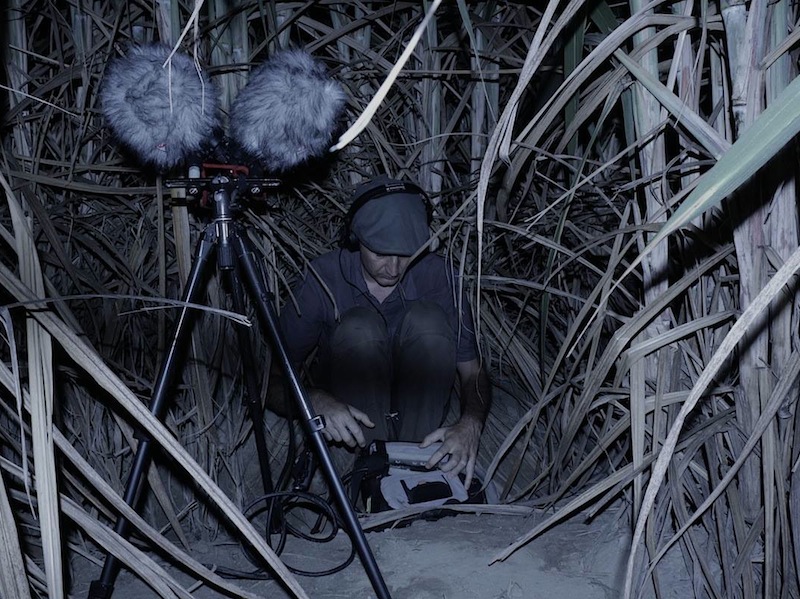Animal Music: The Cat’s Meow – Part 1

Cats may be holding on to their juvenile meow to manipulate us. It’s something that cat owners have known instinctively since they entered into that special understanding with their feline friends; that uncanny ability of the house cat to communicate with its owners. And now, science can prove that our instincts are correct. Scientists believe that cats have developed an anthropogenic means of communication that appeals to our auditory and emotional responses.
Researchers have long been fascinated with feline vocalisation. In 1944 Dr Mildred Moelk wrote a seminal paper in The American Journal of Psychology that documents and describes in great detail the sounds that domestic cats produce. She categorised the sounds into three groups; cat goal, cat-man and cat-cat. The cat-goal group describes the noises that a cat makes when it wants something. The cat-man group vocalisations arise when a cat’s attention is focused on a human in a friendly, petting or sympathetic manner. The cat-cat category is regulated mostly by the life-cycle of the cat including the meow of the kitten and the caterwaul of mating season.
Moelk also groups the basic vocalisations into three categories, which relate to the position of the mouth. There are the murmurs of the closed-mouth variety, the open and closing mouth of the meow and finally the sounds produced when the mouth is held open in a fixed position such as growls and chatters. Moelk effectively demonstrates that cats do indeed have different patterns of communication for different scenarios and you could say that, in their own way, cats ‘talk’ to us. Cats are born with the ability to vocally express themselves in a variety of ways which appear to be related to their level of satisfaction or dissatisfaction. The house cats’ dependence on their owners has led them to expand upon their vocal repertoire in order to better let their human friends know how they’re feeling. This domestic vocal repertoire is not shared by their wild relatives.
French art critic, author of Les chats and cat-lover Champfluery (a.k.a Jules François Felix Fleury-Husson), counted 63 notes in a cat’s vocal stylings. They can express complicated vowel sounds, as Moelk aptly details in her essay, and up to nine consonants. Author and academic Dr Nicholas Nicastro documented 535 cat meows over a span of 36 hours among 12 domestic cats, in his popular dissertation that suggested cats have learned how to manipulate their owners.
It is well established that while only the Felis genus – or small cats – can purr and only the Panthera genus – or big cats – can roar, all felines can meow. Even today, the exact mechanics of cat vocalisations elude scientists. Recent studies report unknowable physical elements of vocal tracts and counter-intuitive findings related to size and frequency. No one is really sure how a cat produces its purr, though it is thought to relate to the hyoid bone in the throat. In the first comparative and quantitative report of purring in domestic cats, veterinarian anatomist Dr Gerald Weissengruber suggests it has something to do with vocal folds, that the sound is made by rapid twitches of the vocalis muscle. In big cats there are large pads within the vocal folds which would make it hard to contract with any rapidity and therefore make purring difficult. But it seems that while we can’t pin down the ‘hows’ of feline vocalisation, we can make assumptions about the ‘whys’. In his 2004 essay, ‘Perceptual and Acoustic Evidence for Species-Level Differences in Meow Vocalizations by Domestic Cats (Felis catus) and African Wild Cats (Felis silvestris lybica)’, Dr Nicholas Nicastro studied vocalisations of the domestic cat in comparison to those of its closest wild relative, the African wild cat. They recorded 535 various cat meows, from both domestic and wild cats. They played these recordings to a number of human test subjects and assessed the responses of listeners with regard to acoustical characteristics and perception. In every instance, the candidates considered the domestic cat vocalisations far more pleasant than those of the wild cats.

Nicastro aimed to prove that domestic cats have developed vocalisations that appeal to humans and solicit sympathy and response. The meow is a sound made by kittens, across all felids both wild and domestic. However, it is generally only the house cat that continues to meow into adulthood. It’s been suggested that this juvenile behaviour indicates the arrested development of domestic cats. It also indicates that cats figure out that we much prefer the sweeter, higher sounds of the meow to the more guttural utterances of an adult cat. It’s been noted among animal rescue workers that the meow is largely absent in feral adult cats, and yet after regular contact with human caretakers, feral cats will develop a meow.
Nicastro chose the African wild cat for the study because it is one of the rare example of wild cats that do meow in adulthood. He could therefore play recordings of both wild and domestic meows to the listeners with the assurance that the African wild cat’s meow was in no way designed to appeal to human ears. After his analysis of the listener responses, Nicastro reported that domestic cat vocalisations are indeed more effective at exploiting human response. Compared to the deeper meows of the wild cats, the domestic cat meows are higher pitched which taps into the human tendency to respond to higher, less threatening and ultimately more appealing tones.
Research carried out by Dr Karen McComb in 2009 at Sussex University examined how some domestic cats embed certain tones and intensities in their purrs to garner a more immediate human response. Most recently in 2012, phonetics expert Dr Susanne Schötz at Lund University carried out a pilot study to speculate that cats mimic paralinguistic – perhaps even linguistic – information by varying their fundamental frequency. In her study Dr. Schötz suggested that the extraordinary variation in cat vocalisations might point to the existence of, more or less, a cat language. She thinks their sophisticated ability to modulate the frequencies and combination of their meows and murmurs might have a purpose. That purpose, she hypothesises, is a fine and complex method of vocal communication. Her findings indicate, as did Dr Nicastro’s, that cats have different vocal communications depending on whether they are communicating cat-cat or cat-human. These findings hint at a level of linguistic sophistication that has long been appreciated by cat lovers and only recently accepted by scientists. Since humankind’s intimacy with cats began, we have noticed the
extraordinary expressions of these mysterious creatures and wondered about their ability to manipulate our emotions. Whether they’re protesting about the brand of cat food on offer or being indignant about a visit to the vet, we have always understood what they are trying to ‘tell’ us. Science, as always, takes a while to catch up with instinct. And it seems this time we were right about our feline friends. Recent research has vindicated our suspicions with examples of how cats moderate and change their natural, wilder vocal tendencies to produce softer, higher
BY TOBIAS FISCHER & LARA CORY
Susanne Schötz & Robert Eklund, ‘A comparative acoustic analysis of purring in four cats’ in Quarterly Progress and Status Report TMH-QPSR, Volume 51, 2011. Proceedings from Fonetik 2011, Royal Institute of Technology, Stockholm, Sweden, 8–10 June 2011, pp. 9–12
Robert Eklund & Gustav Peters, ‘A comparative acoustic analysis of purring in juvenile, subadult and adult cheetahs’ in Proceedings of Fonetik 2013, the XXVIth Swedish Phonetics Conference, Studies in Language and Culture, no. 21, 12–13 June 2013, Linköping University, Linköping, Sweden
Susanne Schötz, ‘A phonetic pilot study of vocalisations in three cats’ in Proceedings of Fonetik 2012, Department of Philosophy, Linguistics and Theory of Science, University of Gothenburg
Dr Nicholas Nicastro, ‘Perceptual and Acoustic Evidence for Species-Level Differences in Meow Vocalizations by Domestic Cats (Felis catus) and African Wild Cats (Felis silvestris lybica)’ essay, Cornell University, 2004
Carl Van Vechten, ‘The Cat in Music’ in The Musical Quarterly, Vol. 6, No. 4 (Oct, 1920), pp. 573- 585, Oxford University Press






















